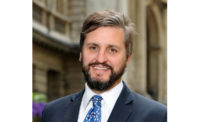
Earlier this year, Michael A. Speaks took over as dean of Syracuse University’s School of Architecture. As dean of the College of Design at the University of Kentucky, Speaks focused his school's energy into a series of multi-stakeholder community revitalization projects, not unlike the legacy left by his Syracuse predecessor, Mark Robbins, whose tenure was defined by numerous efforts to revive the Rust Belt city. On the occasion of Speaks's first midterm review, he spoke with RECORD about his accomplishments at Kentucky, inheriting Robbins's mantle, and how postindustrial redevelopment and design education can benefit each other.
Before coming to Syracuse, you finished a reinvention of the University of Kentucky’s 2009 Solar Decathlon entry.
The competition was a great exercise for us, but at the end of the day we wound up with a $1 million, off-the-grid house at a land grant institution in a not-wealthy state. Working with the University of Kentucky Center for Applied Energy Research and a company called Kentucky Highlands Investment Corporation, we transferred the DNA of that project to an affordable residence that low-income homeowners could heat or cool on only $1 a day—and that could be made mostly of Kentucky components, assembled in the shuttered houseboat factories surrounding Lake Cumberland. Over four years we raised several million dollars in funding from various sources, and the students designed and completed two prototype houses. Our ambition was to work at the neighborhood scale, and Kentucky Highlands has just purchased a trailer park in Emlyn, Kentucky, where it will replace the existing units with homes that share a geothermal system.
What are your plans for Syracuse? Will you try to continue that kind of real-world outreach?
I want students and faculty to be more involved in our community’s problems and projects. We also have an opportunity to get rid of M.Arch II programs—or remake them, developing new post-professional degree programs that exert real power on the built environment. Our new facility in New York City, the Fisher Center, is a possible venue to test post-professional education.
How does the school’s relationship with the university and city change with a new chancellor in place?
Our challenge right now is to determine new opportunities. Some projects that date to the last administration, such as the Connective Corridor, are still being completed; we will certainly be involved in moving them forward. A question to ask, too, is how and to what extent these previous projects impact the fabric of the city?
What impacts indicate success to you?
They have to have economic-developmental impact in the places they were articulated. I’m not convinced that the only way to make a design intervention is to make a design object. We will want to look carefully at what has been done, extending some strategies and pursuing others.
What are some alternative strategies?
My interests lie with housing and other large-scale interventions in the city. I think our strategy will be to look at more comprehensive undertakings—more planning, maybe policy. A lot of our direction will depend on our partners in government, yet my interest is in finding ways we can bring design to bear in transformation of cities, especially a Rust Belt city like this. Not everything has to focus on the reinvention of downtowns, either.
Aren’t we already at a point in this conversation where design-led transformation means an urban farm here, an incubator there, and a new bikeway to link them?
There are lots of places that need a lot of help. Mayors in small- and medium-size towns, if they have planning departments, then what they do is perfunctory. There’s not a lot of innovation; you can’t take a lot of chances. Helping in those kinds of situations isn’t necessarily formulaic, either. There are two enormous values that designers add to a proposition. One is team-based research—understanding constraints and bringing in other disciplines until you arrive at a solution that one or two people couldn’t have thought of—because that’s studio culture. The other is prototype thinking. Prototyping something, imagining its strengths and weaknesses as a group, and iterating another version produces innovations that are otherwise difficult to come by.
How will students respond to both the continuity and change you’re proposing?
Today, students and faculty are looking for something more real than the icon architecture [recently associated with museum expansions]. Unfortunately, this search for authenticity often manifests as a return to simpler times, to a nostalgic view of the past. The challenge today is how do we return to the real without becoming conservative. And one of the most important ways to avoid such conservatism is to focus on the future by speculating and prototyping, by offering a stream of possible futures and solutions. And that is precisely what we intend to do here at Syracuse.


Post a comment to this article
Report Abusive Comment